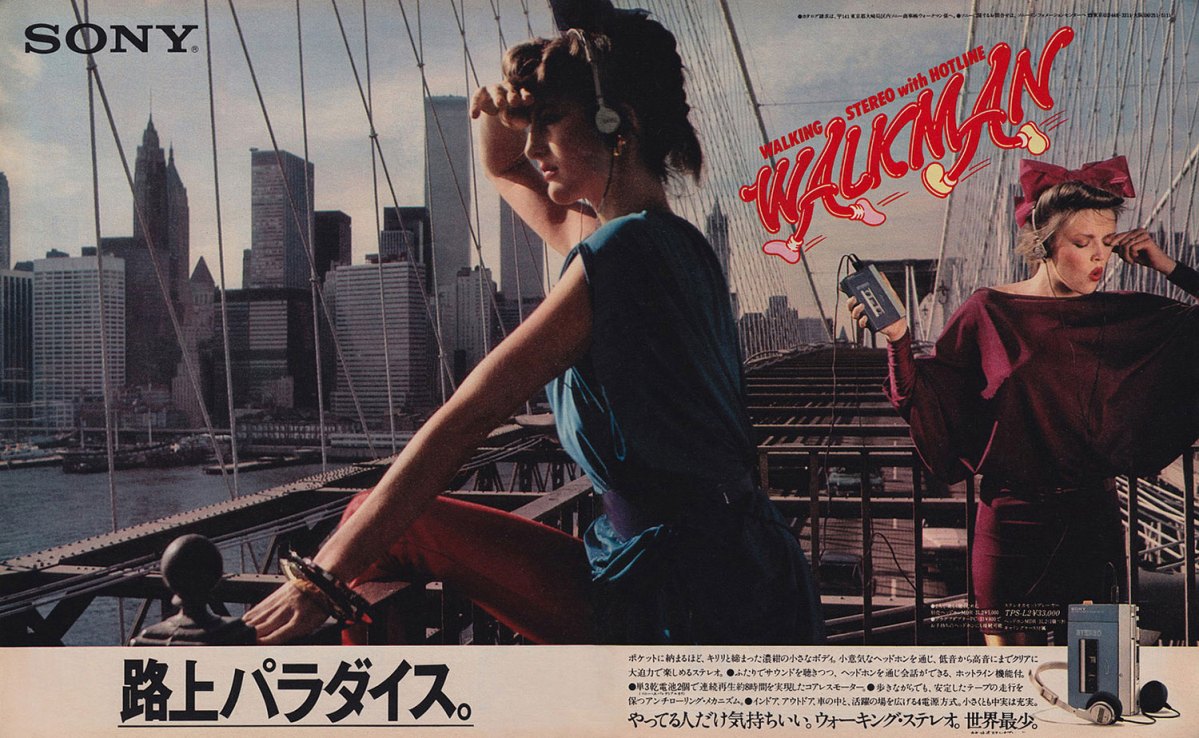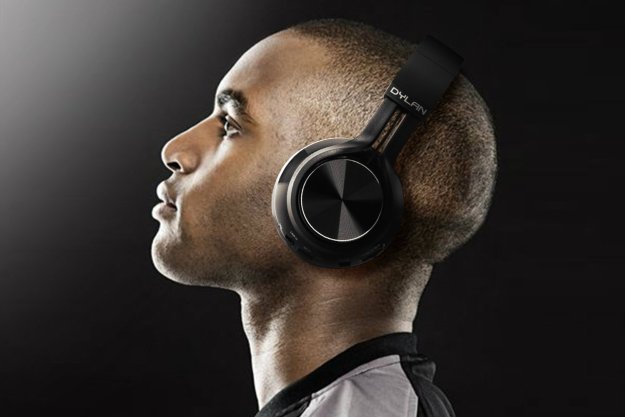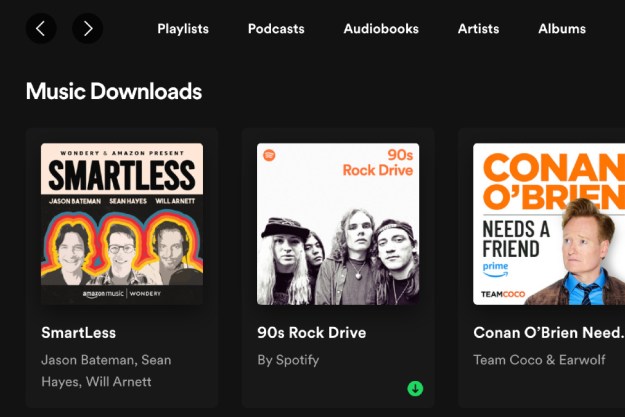I have a soundtrack that plays in my head all day long. (You do too, don’t you?) Sometimes it’s Pink Floyd, sometimes it’s Steve Aoki, sometimes it’s The Chainsmokers, sometimes it’s The Wild Feathers, sometimes it’s Joey Bada$$. My internal jukebox veers seamlessly from modern pop to progressive rock to sunset house to vintage jazz, and all points in between — and it all sounds pretty damn good to me.
Popular music has always been evolving, but over the past decade, the way it’s listened to hasn’t just evolved, it has undergone an upheaval. We’ve gone from accessing a few microgigs of tuneage on pocket-sized iPods to feasting on an essentially unlimited streaming smorgasbord. The phrase “so much music, so little time” is now quite possibly the cruelest irony of all to every born-and-bred music fan the world over.
Still, musicologists like myself soldier ever onward, pressing play on whatever device technology delivers at the moment, in search of that one song, lyric, or sound that transports us to that special, magical place where only music can take us. The changes that have occurred in music over this past decade have been varied, vast, and fast-paced. Fidelity, portability and money have all duked it out, and the landscape doesn’t look the same anymore. Here’s a deep dive into how we got from the first stanza to the latest movement, and where we’ll take it from here.
Convenience is king
The true liberation of music in this past decade came not out of the rise of Napster, Kazaa, Gnutella, and other file-sharing services near the turn of the century, but more with the advancement of its portability in the late-aughts.
“Like it or not, convenience is king. When something in your pocket approximates equipment that otherwise takes up an entire room, you can bet that most people will opt for the pocket version,” observes Ken C. Pohlmann, Professor Emeritus of Music Engineering at the University of Miami and author of Principles of Digital Audio and Master Handbook of Acoustics. “The popularity of cassette Walkmans, portable CD players, and MP3 players demonstrated this. Apple saw this, too, and the iPod was their beachhead in Normandy. Going forward, of course, phones will continue to own the portable audio market. There will be high-end, specialty audio players, but nothing will compete significantly with phones.”

I used to bring nylon sleeves and visors stuffed with many multiple hundreds of CDs with me on cross-country road trips. That turned into multiple 160GB iPods to take their place, but now I simply access music on the go via my phone and subscriptions to Spotify and Apple Music. But when I’m at home and hunkered down in my listening studio for what I call “appointment Listening”, I prefer to access much of my music via a physical format — and I’m not alone.
A new era for vinyl
While tapes and CDs have all but disappeared, one area of physical media that has grown while its peers wilt is, oddly, much older. Call it wax, a long-player, a 33-1/3rd, or simply the vinyl LP. The Recording Industry Association of America (RIAA) reported that total LP sales for 2015 rose 32 percent to $416 million, the format’s highest level since 1988. (In comparison, CD sales, while higher in dollar volume per se, were down 17 percent.) Vinyl revenue was even higher than that derived from all streaming services, like Vevo and Spotify, which only accounted for $385 million last year. Make no mistake, though — streaming is the future of the music business. Naturally, the vinyl revival has eagerly been attributed to, you guessed it, the buying habits of millennials. As MusicWatch has noted, half of vinyl record buyers are younger than 25.
“They resisted the digital onslaught and continue to resolutely wave their Bic lighters in the concert air.”
Z Berg, the 30-year-old frontwoman for the popular electro-pop outfit Phases, found herself connecting with vinyl on not only a sonic level, but on a visceral level as well. “When I was a kid, my dad [Tony Berg, the noted Geffen Records producer, A&R executive, and former session player] used to listen to the BRMC, the Black Rebel Motorcycle Club, and on their first American record, they made these vinyl 7-inches that the drummer [Nick Jago] made the artwork for. It was so astonishingly beautiful! I used to listen to them a lot, and look at that amazing artwork at the same time. I was like, ‘This is how you do it!’ I wanted us to release our music like that. We felt we needed to do something particularly special for our fans on vinyl, besides having them see the artwork on a large scale. So we did white vinyl with the original Warner Bros. palm trees logo on it so it would look like a late-’70s album.”
At this point, there are two age groups of vinyl enthusiasts, as Pohlmann points out. “For some youngsters, vinyl is a predictable reaction to our almost all-digital world. It is good to be a rebel,” he concurs. “For some oldsters, vinyl is simply their preferred domain. They resisted the digital onslaught and are the ones who continue to resolutely wave their Bic lighters in the concert air. Both groups help keep the analog flame alive — and I’m glad of it.”
In a world driven by instant portability, the marked increase in LP purchasing and listening is actually encouraging. “In the plant, animal, and technical worlds, diversity is good,” Pohlmann continues. “We never want to see a species go extinct. True, the commercial market for Edison cylinders and 78rpm discs is quite small, and someday, the market for 33-1/3rpm discs will be smaller, too. But loyalty and devotion are admirable qualities, and I think all audiophiles appreciate it.”
For recording artists, it’s not just a trip down memory lane. “Vinyl is a way to get paid,” explains trumpeter Lee Loughnane, a founding member of Chicago. “There’s an expense involved in the recording process, the mixing, and how we set it up for audiophiles. There’s a price to be paid there, and it can’t be for free.”
“Once the listeners flipped the record over to Side 2, that’s when we knew we had a real relationship going with our fans.”
“Chicago is an exception in the fact that we came from an era where people were used to buying music, and I think our fans still go out and buy that music because of who we are and what they’re used to. They feel like they’re going to get better quality that way,” Loughnane believes. “The younger generation is more used to getting music for free because it was always available to them that way, and it seems that’s the way it should be. Now we’re trying to re-educate them to show that it takes more to put music together than they had ever considered. We just don’t know where it’s going to be, but the musician has to make money. We have to put food on the table. That’s an ongoing situation that will eventually resolve itself.”
“These songs just don’t ‘come,’” Loughnane explains. “It’s not all that easy to come up with the music first; it has to come through you — sometimes more painfully than others, sometimes more easily.”
Millennial musicians also relish cueing up LPs for their own personal listening. “I do love spinning records; it’s my preferred listening method choice, for sure,” admits Liam Magill, vocalist/guitarist of the young British alt-psychedelic collective Syd Arthur, who just released their latest album Apricity on October 21. Magill says some of the current favorites he’s recently played on his vintage Technics turntable include LPs by Can, Radiohead, Morgan Delt, and Hiatus Kaiyote. “One of the first records my brother [and Syd Arthur bassist] Joel and I listened to growing up was Frank Zappa’s Hot Rats,” Liam recalls. “At first, I didn’t quite get the Zappa thing, but after listening to him a lot on vinyl, in time, I grew to love his style. He was a totally unique, amazing musician. So we’ve also tried to push the evolution of our sound with every new record we make, and vinyl is the best way to hear things like the slapback echo and other delays we used to help carry the vocals across the gaps. It just depends on what the songs need.”

Tommy Shaw, guitarist/vocalist for Styx, believes vinyl can be more personal, too. “We took great care in determining the order of how we presented each song on each side of the album, as well as making sure each song counted, Shaw said. Once the listeners flipped the record over to Side 2, starting getting into the deeper cuts, and began requesting we play them at our shows, that’s when we knew we had a real relationship going with our fans.”
Streaming isn’t optional
I’ve personally interviewed close to a thousand musicians, producers, DJs, and engineers in the past few years alone, and, to a person, every single one of them acknowledges streaming is where it’s going for music. Yes, many lament the current pay structure (or lack thereof) that streaming services provide them, but they understand that with technological advancement comes great growing pains.
“This is where our futures as recordings artists lie.”
Artists have also been encouraged that low-grade MP3-quality streaming has been giving way to higher-quality high-resolution downloads at rates of 96kHz/24-bit and above. “Storage has become so cheap, so it’s no longer an acceptable excuse to record at any rate other than hi-res,” believes Mark Kelly, keyboardist for Marillion, the prog-leaning band that pioneered the idea of crowdfunding when they solicited more than 12,000 pre-orders for their Anoraknophobia album in 2001. “This is where our futures as recordings artists lie.”
The streaming future is indeed bright, if you keep an open mind about its possibilities. “Several years ago, people dreamily predicted a future day when a Celestial Jukebox would let you listen to any song at any time — and that prediction, of course, is now reality,” Pohlmann confirms. “And unlike a lot of dystopian predictions, this one turned out pretty well. We get all the music we could ever want, companies get indentured subscribers, and everyone is happy. Lo-res is fine for everyday listening, but for critical listening, hi-res is either already available or increasingly will be.”
DJs and electronic artists are often found on the streaming front lines, and they readily embrace what’s ahead. “I love streaming platforms,” notes Jai Wolf, the 22-year-old DJ born as Sajeeb Saha in Bangladesh and who now makes his home in New York. “They’re super-accessible, and they make listening to my favorite tracks and artists easy. I personally don’t care how much I’m compensated for the music. As long as my listeners have an easy way to stream my music, then I’m happy.”
Other artists feel they need to see fair compensation ASAP. “I would certainly prefer that you buy our music so we could at least see some money from it,” says Phases’ vocalist Z Berg. “It’s very, very hard times in the music biz. There is a generation that thinks they shouldn’t have to pay for music. But at the same time, it’s an amazing time to be able to discover new music, things you’d never be able to hear before. I mean, I love Spotify. I’ve found so many things on Spotify. For me, I like their Discover Weekly [Records]. And if I like it, I’m going to buy it.”
“In the earliest days of the record industry there would be these booths where you would listen before buying.”
Rather than fight the system, some artists have found other, more creative angles in which to work in conjunction with streaming services in mutually beneficial ways. “It’s so conflicting. Spotify is really supporting us by promoting concert dates,” says Tyler Williams, drummer for indie-folk heroes The Head and the Heart. The streaming service partnered with the band when the time came to promote the release of their latest album, Signs of Light, in September. The Head and the Heart currently averages more than 3.2 million monthly listeners on the service, and Light’s lead track, All We Ever Knew, has in excess of 12.8 million Spotify listens to date.
“For this record cycle, they’ve been nothing short of amazing for us,” says Williams. “As this record has gotten out in the world, they’ve done a couple interesting things with us, like giving some of our biggest Spotify listeners in certain cities presale access to concert tickets — which is such a cool, unique idea. Everybody has their own opinion about streaming, but for us, it’s definitely been helpful. It’s definitely the wave of the future. Nobody’s going to give up streaming listening at this point.”

How do new artists just entering the music business feel about their future in a streaming universe? I went right to the source by asking Vittorio and Vincenzo, first-name-only 13-year-old twins from Santa Rosa, California, who record straight-up rock and roll as a duo known as V2 (pronounced “V-Squared”). It’s also worth noting that neither twin owns a personal phone, or is able to drive just yet.
“I know that Apple Music and Spotify are totally successful with the number of people listening to music, but the people putting their music on it are making zero, or hardly any money, by doing it. It’s kind of killing the artists a bit,” feels guitarist/vocalist Vittorio. “I mean, we have our own music on these sites to have exposure and get people to listen to us, but it’s definitely hard for artists to make money off of those sites.”
Adds drummer/vocalist Vincenzo, “I think it’s a lot easier for people to get hits with all the digital stuff. You can listen to it so easily. You don’t have to go to a music store, or do anything like that. You can just download it onto your phone, or wherever you listen. I think that makes it a lot easier for people to hear your music — but it’s also a lot harder to make money off of that, because it’s so cheap. You do need to make a living somehow.”
Dee Snider, frontman for legendary metal band Twisted Sister, looks at the business from the other side of his career, having just ended it when the band hung up its glam and glitter for good on October 1. “Streaming music is a plus and a minus,” believes Snider, who’s now pursuing a solo career. “I think the idea of letting people sample something before buying it is great. You go back to the earliest days of the record industry where there would be these listening booths where you’d put on headphones, and you would listen before buying.
“I compare it to if I owned a fruit stand,” Snider continues. “You’d walk in, and if you were interested in getting some strawberries, you’d say, ‘How do the strawberries taste?’ I understand you. Sometimes the strawberries aren’t ripe, so I say, ‘Have one. Try it. If you like it, buy the strawberries — don’t steal the basket and run out of my store. If you don’t like it, walk away. I’m cool with that.’”
The music you make is equal to the music you take
Where does the music biz go from here? Pohlmann has the next-to-last observation: “Yesterday, I saw a kid wearing a T-shirt that said ANALOG. Pretty cool. However, that bold endorsement was watered down by the fact that he was fooling with his phone and had headphones jacked into it. Whatever his attire might proclaim, the fact is his actual life revolves around digital. And that pretty much says it all. He wouldn’t wear a T-shirt that said DIGITAL, but in fact he is irrevocably plugged into bitstreams. Nothing wrong with that. Me, I have a very faded DENON CASSETTES T-shirt with a pocket that snugly holds my 3TB portable hard drive.”
As for me, my T-shirts say MUSIC LIVES INSIDE YOU (if you look closely enough, that is). I find that a fair mixture of the best of all aural worlds — hi-res streaming, surround-sound envelopment, and virgin-vinyl spinning — is the surefire way to keep the music alive however you choose to receive and relish it. That’s how my daily internal soundtrack rolls.


